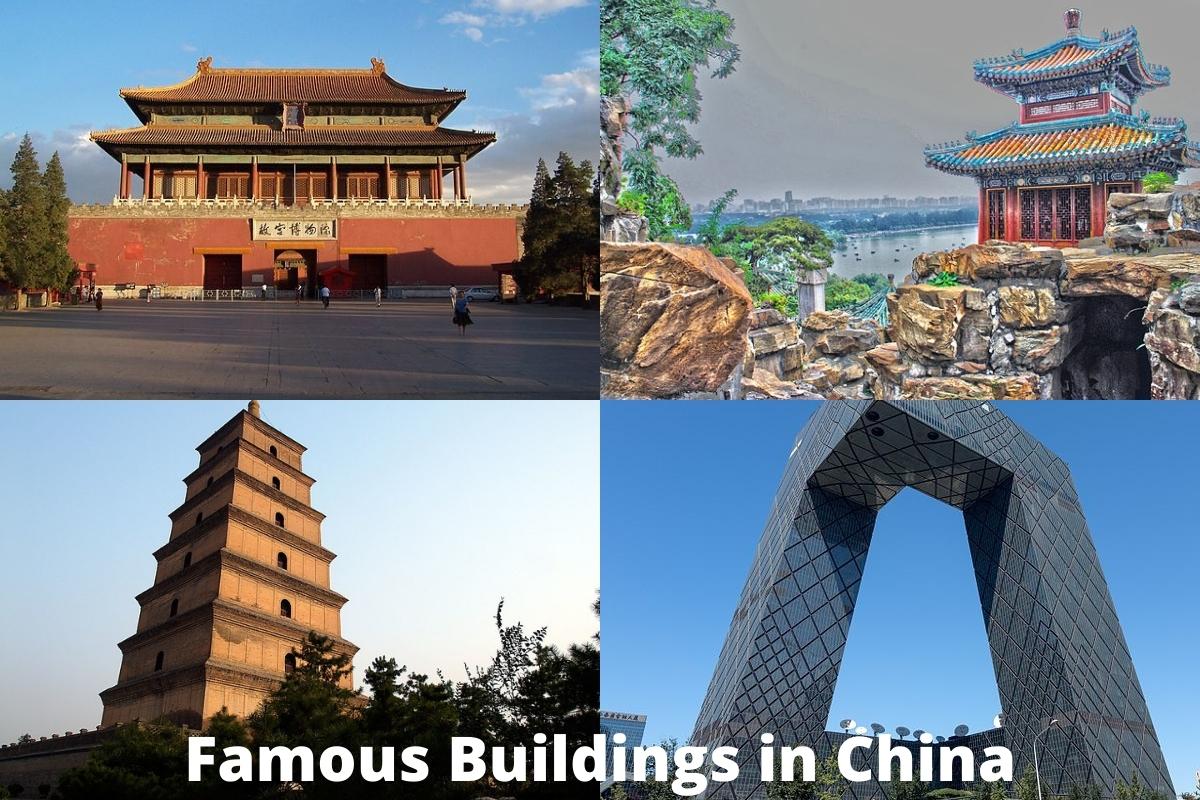The term “Chinese architecture” refers to a certain architectural style that originated in China but has now spread throughout East Asia.
Architecturally speaking, little has altered from its inception in the early imperial period.
Millions of people visit the these famous buildings in China every year and we’ve compiled a list of them for you.
Famous Buildings in China
1. Giant Wild Goose Pagoda
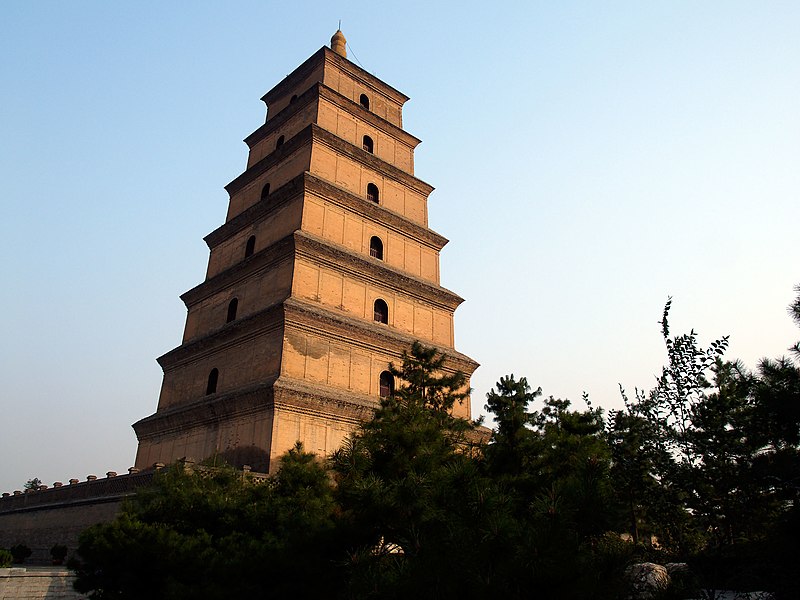
It’s a massive Buddhist pagoda in Shaanxi, China, and it’s also known as the Big Wild Goose Pagoda. Throughout the Tang dynasty in the mid-7th century, it was constructed. Its original height was five stories.
Its outside brick facade was repaired during the Ming dynasty, and it was rebuilt in 704. Buddhist monk, scholar, explorer, and translator Xuanzang carried sutras as well as sculptures of Gautama Buddha to China from India in the seventh century.
The pagoda’s inside walls presently exhibit etched figures of Buddha by the celebrated Yan Liben, a 7th-century artist.
In 2014, this pagoda and several other Silk Road sites were included on the World Heritage List.
2. CCTV Headquarters
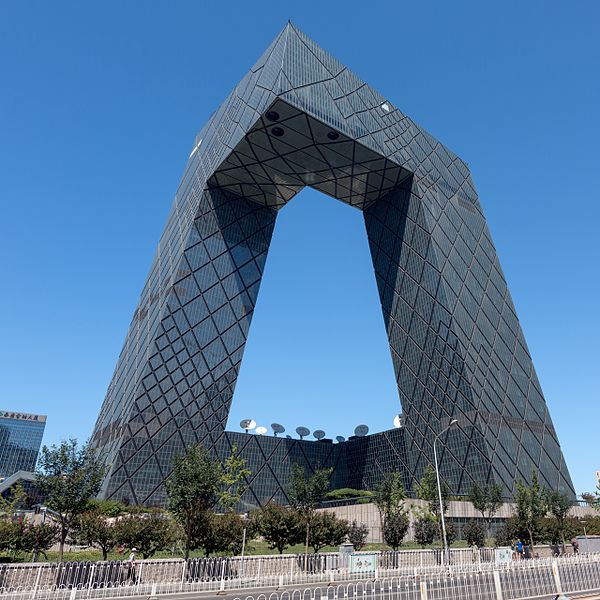
China Central Television’s administrative offices are located in this building (CCTV). The building’s height is 234 meters (768 feet), and it has 51 stories.
It is located in the Beijing CBD on East Third Ring Road, Guanghua Road (CBD). On June 1, 2004, construction began, and by January 2008, the building’s exterior was complete.
In February 2009, due to a fire that broke out at the nearby Television Cultural Center, development on the headquarters did not wrap up until 2012, and it wasn’t officially opened until the following year.
Also Read: Buildings in Hong Kong
According to the Council on Tall Buildings as well as Urban Habitat, the CCTV Hq was the best tall structure in the world in 2013.
Contrary to popular belief, the main building is not in the shape of a tower but rather a loop of six vertical as well as horizontal parts covering 473,000 m2 of floor space, resulting in an irregular grid on the façade and an open core.
Considering that the site is in a seismic region, the building’s construction has unique structural challenges.
3. The Palace Museum
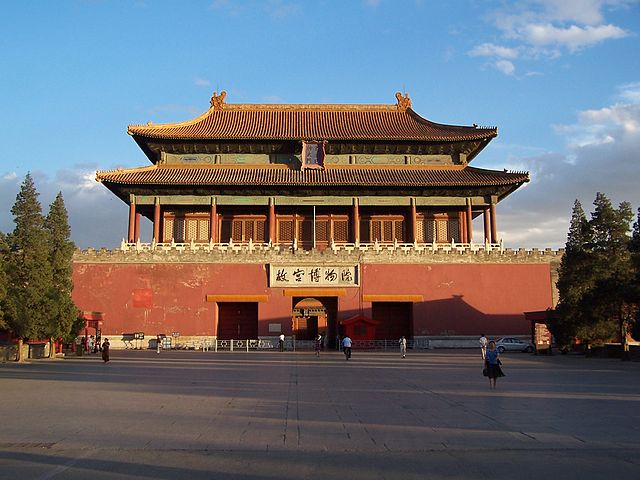
The Palace Museum, which has been around since 1925, is housed in the royal palace of the Qing and Ming dynasties.
With its stunning architecture and an extensive collection of paintings, calligraphy, ceramics, and artifacts from the imperial collections, the Forbidden City is widely regarded as the finest museum in China and the world.
Also Read: Famous Landmarks in China
The old imperial home has been a cultural historic site since 1961 when it was declared as such by the State Council, and since 1987, when it was added to the UNESCO World Heritage list.
The Palace Museum, a must-see when in Beijing, may be reached via the Gate of Heavenly Peace.
Chinese scientists from long ago bestowed celestial significance to the spot. They connected the emperor’s palace, the center of the earthly universe, with the Pole Star, the center of the celestial one.
4. National Centre for the Performing Arts
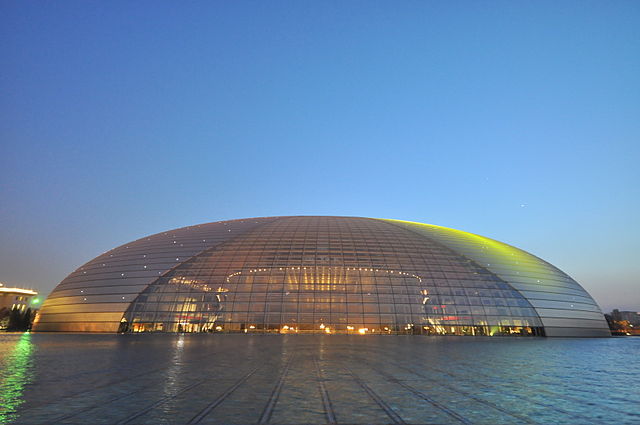
Located in Beijing, the National Centre for the Performing Arts is home to an opera house among other performing arts venues. It is the largest theater complex in Asia and was opened in 2007, after being designed by Paul Andreu, a French architect.
The center has a roughly spherical shape and measures 212.20 meters along its long axis (running east to west), 143.64 meters along its short axis (running north to south), and 46.285 meters in height, 119.900 m² in area, and about 165,000m² in total building area.
Also Read: Famous Buildings in Singapore
Totaling 3.067 billion yuan, this covers the cost of the main structures (at 105,000 m²) and the basement ancillary facilities (at 60,000m²).
Audio stores, dining options, exhibition spaces, a theater, art galleries, a concert hall, an opera house, and other services are all located within the complex.
5. Potala Palace
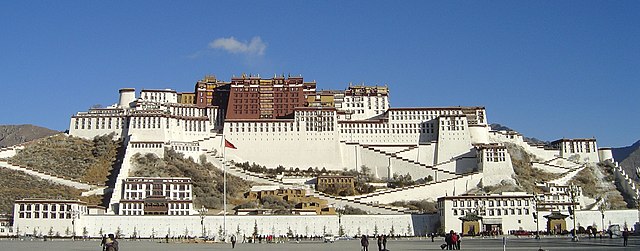
There is a dzong fortification called the Potala Palace in Lhasa, Tibet. It served as the Dalai Lama’s winter palace between 1649 and 1959, and in 1994, became a World Heritage Site in94.
The mythological mountain on which the bodhisattva Avalokitesvara is said to have meditated is the inspiration for the palace’s name.
A recommendation from his spiritual advisor, Konchog Chophel, inspired the Fifth Dalai Lama to begin building it in 1645. (died 1646).
The location, he said, was perfect for the capital because it was close to the historic district, the monasteries of Drepung and Sera, and the Drepung and Sera universities. It could be erected atop the foundations of Songtsen Gampo’s White or Red Palace, which was constructed in 637.
The structure is 400 meters in length from east to west and 350 meters in width from north to south. It has sloping stone walls and copper poured into the foundations to protect it from earthquakes.
Marpo Ri, often known as the “Red Hill,” is more than 300 meters tall and is home to a complex of buildings with a total height of 117 meters, housing over 1,000 rooms, 10,000 shrines, and about 200,000 statues.
6. Oriental Pearl Tower
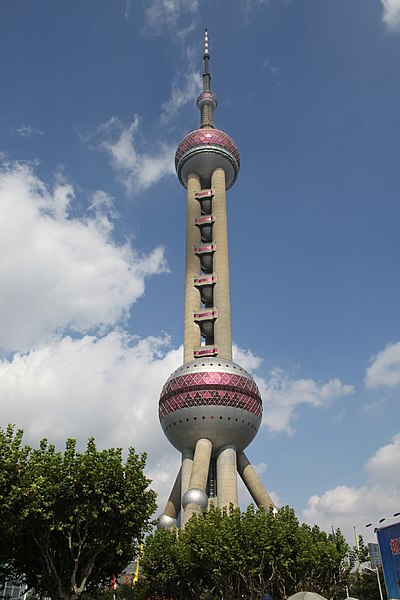
Shanghai is home to the Oriental Pearl Radio & Television Tower, a tv tower. One of the most prominent buildings in the Pudong New Area, it stands at the end of Lujiazui on the banks of the Huangpu River, directly across from The Bund. Jiang Huan Chen, Lin Berlin, and Zhang Xiulin were the main designers.
In 1991, work began on what would become the tower, and it was finally finished in 1994. Every night, the tower is illuminated by a series of dazzling LED lights. In 2007, the Chinese edition of Live Earth was held in the Oriental Pearl Tower on July 7.
Eleven spheres of varying sizes decorate the tower. The tower’s two largest spheres, located at either end, have respective diameters of 50 meters and 45 meters, respectively.
Three columns, each measuring 9 meters in diameter, serve to connect them. The largest ball measures 14 meters in circumference.
7. The Summer Palace
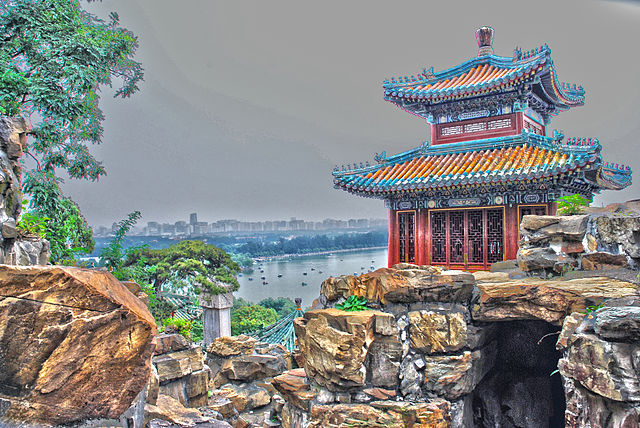
Beijing’s Summer Palace is a massive complex of gardens, lakes, and palaces. It was a Qing-period imperial garden.
Kunming Lake and Longevity Hill are located inside its borders, as is the Seventeen Hole Bridge. It has a total area of 2.9 square kilometers, of which 75% is water.
There are several structures in a row on Longevity Hill, which rises to a height of roughly 60 meters. While the hill’s front is filled with grand halls and pavilions, the hill’s back is peaceful and surrounded by nature’s splendor.
The excavated earth was utilized to construct Longevity Hill, while the 2.2 square kilometers of central Kunming Lake was created solely by humans.
There are more than 3,000 different types of old Chinese buildings in the Summer Palace, all of them influenced by the gardens of South China, and they house a wealth of more than 40,000 different priceless historical treasures from each era.
The Summer Palace was added to the UNESCO World Heritage List in December 1998.
8. Shanghai Tower
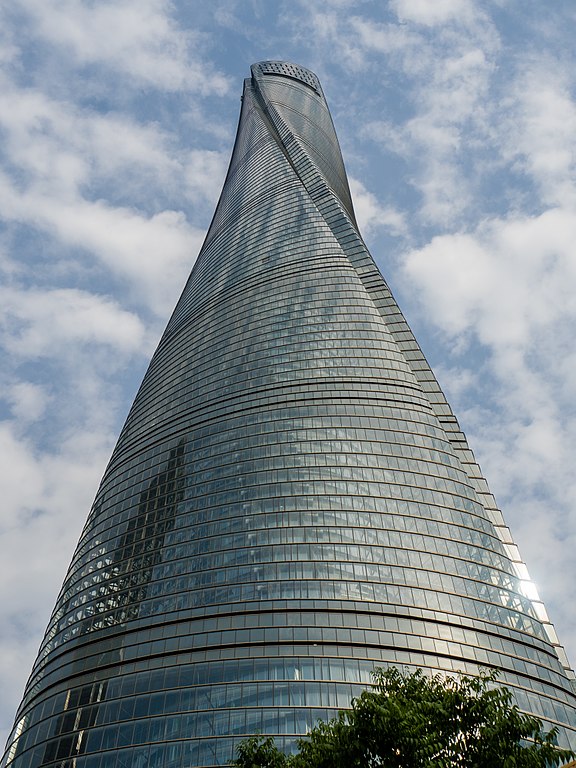
This is a mega-tall tower in Shanghai, standing 128 stories tall. According to its architectural crown, it is the third-tallest skyscraper in the world and the tallest in China.
One of only two buildings in the world with observation decks higher than 562 meters, it has been awarded the LEED Platinum certification for its environmental friendliness since 2015.
Until 2017, it boasted the world’s second-fastest elevators, capable of a maximum speed of 20.5 meters per second, behind only the Guangzhou CTF Finance Center.
It is the first three-fold super tall Pudong building, structure in Pudong, together with the Jin Mao Tower and the Shanghai World Financial Center, and was designed by the international architectural company Gensler and is owned by the Shanghai Municipal Government.
The building’s tiered design maximizes energy efficiency while also creating nine distinct areas for the workplace, retail, and recreational purposes.
9. Temple of Heaven
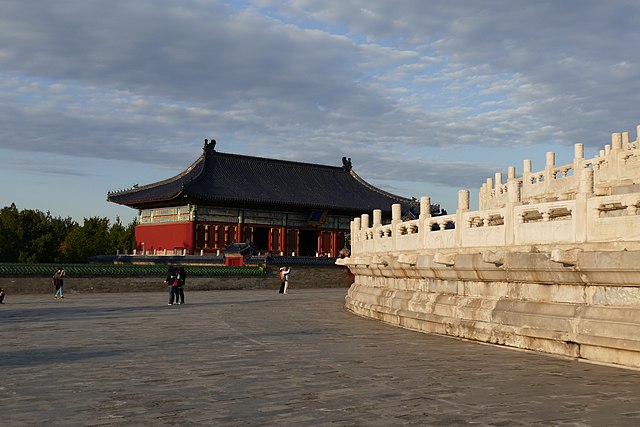
Located in the southeast quadrant of central Beijing, the Temple of Heaven is very much an ancient religious structure.
The Ming and Qing rulers regularly made pilgrimages to the building to petition Heaven for a bountiful harvest. In 1998, the Temple of Heaven gained World Heritage status.
It was considered a masterpiece of architecture due to its symbolic design and arrangement, which influenced Far Eastern building styles for centuries.
Three distinct groupings of buildings on the 2.73 km2 park-like grounds of the Temple were erected by the same rigorous philosophical standards:
-An impressive 36 meters in circumference and 38 meters in height, the Hall of Prayer for Good Harvests was constructed on three stories of a marble stone base and was used by the Emperor to pray for bountiful harvests.
-A circular structure with a single roof peak, the Imperial Vault of Heaven rests atop a single base of marble stones.
-Situated towards the south of the Imperial Vault of Heaven, a Circular Mound Altar is the actual place of worship.
10. Shanghai World Financial Center
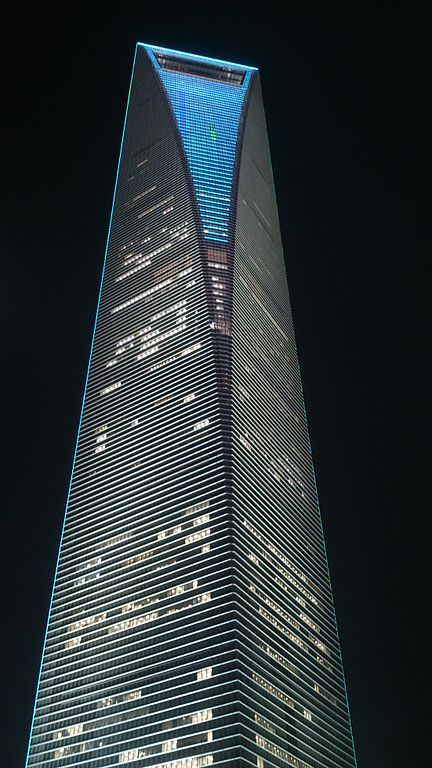
One of Shanghai’s tallest buildings, the Shanghai World Financial Center can be found in the city’s Pudong neighborhood.
Kohn Pedersen Fox acted as the architect, the Mori Building Company as the developer, and Leslie E. Robertson Associates as the structural engineer.
The primary builders were the Shanghai Construction (Group) General Co. and the
China State Construction Engineering Corp. It’s a multipurpose tower with retail on the ground floor, an observation deck, meeting space, a hotel, and office space above.
The tower’s hotel, Park Hyatt Shanghai, boasts 174 suites and rooms across floors 79 to 93 and was the world’s tallest hotel when it opened in 2010.
The Ritz-Carlton Hong Kong, which is located on floors 102 through 118 of its International Commerce Centre, has been surpassed as the world’s second-tallest hotel.

